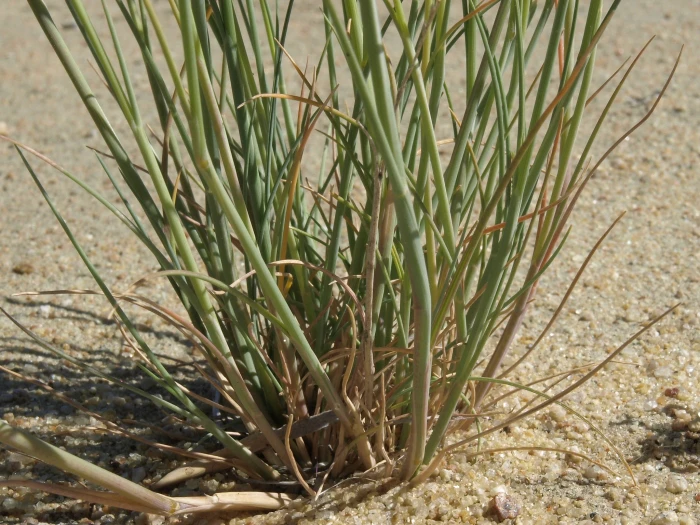Nuttall’s Alkaligrass
(Puccinellia nuttalliana)
Nuttall’s Alkaligrass (Puccinellia nuttalliana)
/
/

© Jim Morefield
CC BY 4.0
Image By:
© Jim Morefield
Recorded By:
Copyright:
CC BY 4.0
Copyright Notice:
Photo by: © Jim Morefield | License Type: CC BY 4.0 | License URL: http://creativecommons.org/licenses/by/4.0/ | Uploader: jdmore | Publisher: iNaturalist |

























Estimated Native Range
Climate Requirements for Daejeon, Korea, Republic Of
| This Plant | Your Site | Plant Suitability for Your Location | ||
|---|---|---|---|---|
| • Precipitation | 4" - 127" | 51" | Aquatic | Aquatic |
| • High Temp. | 33°F - 105°F | 87°F | Your summer temperatures are normal for this plant. | Excellent |
| • Low Temp. | -54°F - 48°F | 20°F | Your winter temperatures are normal for this plant | Excellent |
This plant should grow well at your location with about N inches per year (Y minutes per month) of irrigation.
Summary
Puccinellia nuttalliana, commonly known as Nuttall’s alkaligrass, is a perennial halophytic (salt-tolerant) grass native to a wide range of saline habitats across North America, including the Arctic tundra, temperate mountainous areas, the Great Plains, the Great Basin, and coastal regions. It is particularly adapted to saline and alkaline soils, often found in salt marshes, wet meadows, and other moist, saline environments. This grass typically grows up to 1 meter tall and forms loose clumps, which can be beneficial for soil stabilization. The inflorescence is characterized by thin, spreading branches that bear small, inconspicuous flowers during the growing season.
Nuttall’s alkaligrass is valued for its ability to thrive in challenging environments with high soil salinity, making it an important species for revegetation projects in such areas. It is also used for forage in regions where other grasses may struggle to survive. In cultivation, it requires full sun to part shade and can tolerate a range of soil types, provided they are well-drained and saline. While it is not commonly used in ornamental gardening, it serves a critical ecological role in its native habitats. Its robust root system helps to prevent soil erosion and provides a habitat for wildlife. Care should be taken when introducing this grass to non-native areas, as it can become invasive outside its natural range.CC BY-SA 4.0
Nuttall’s alkaligrass is valued for its ability to thrive in challenging environments with high soil salinity, making it an important species for revegetation projects in such areas. It is also used for forage in regions where other grasses may struggle to survive. In cultivation, it requires full sun to part shade and can tolerate a range of soil types, provided they are well-drained and saline. While it is not commonly used in ornamental gardening, it serves a critical ecological role in its native habitats. Its robust root system helps to prevent soil erosion and provides a habitat for wildlife. Care should be taken when introducing this grass to non-native areas, as it can become invasive outside its natural range.CC BY-SA 4.0
Plant Description
- Plant Type: Grass
- Height: 1-2 feet
- Width: 1-3 feet
- Growth Rate: Slow
- Flower Color: N/A
- Flowering Season: Spring, Summer
- Leaf Retention: Deciduous
Growth Requirements
- Sun: Full Sun, Part Shade
- Water: Medium
- Drainage: Fast, Medium, Slow
Common Uses
Erosion Control, Low Maintenance, Salt Tolerant
Natural Habitat
Native to a wide range of saline habitats including salt marshes, wet meadows, and moist, saline environments across North America
Other Names
Common Names: Nuttall’s Alkaligrass
Scientific Names: Puccinellia nuttalliana, Atropis airoides, Atropis nuttalliana, Festuca nuttalliana, Glyceria airoides, Glyceria montana, Panicularia distans var. airoides, Phippsia airoides ×.L×ve &, Phippsia borealis
GBIF Accepted Name: Puccinellia nuttalliana